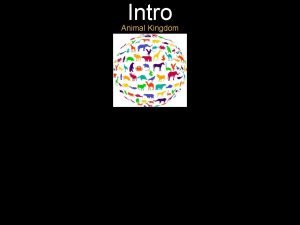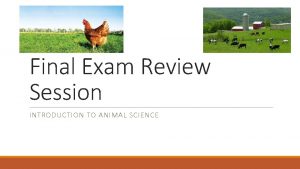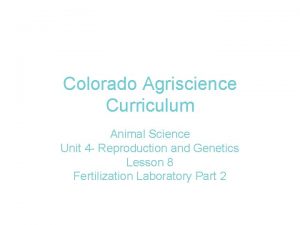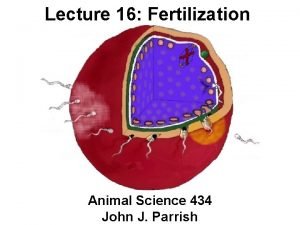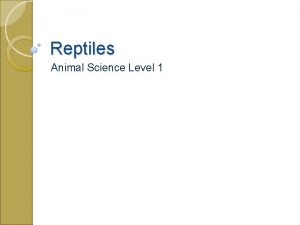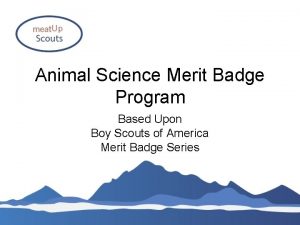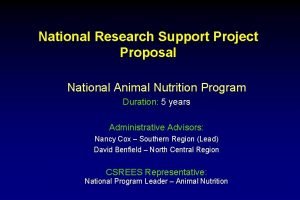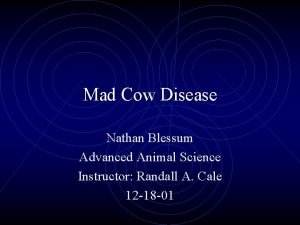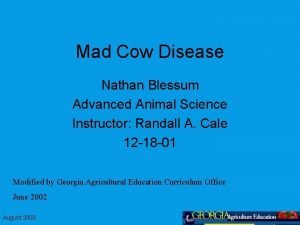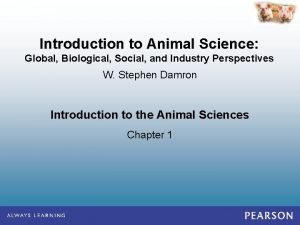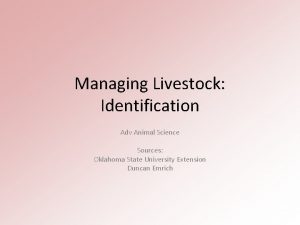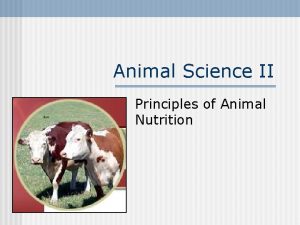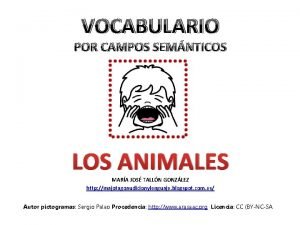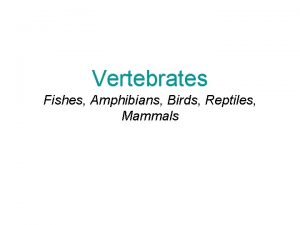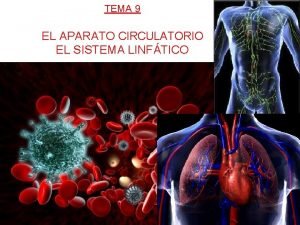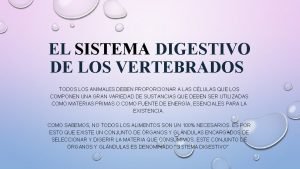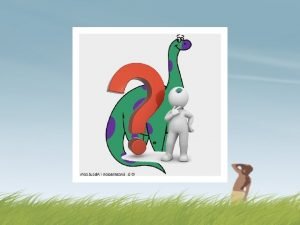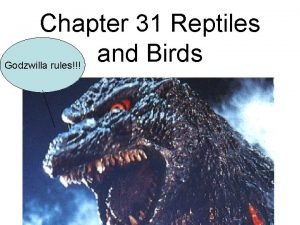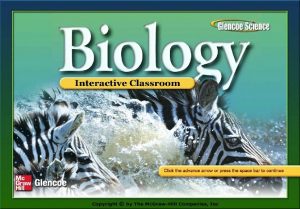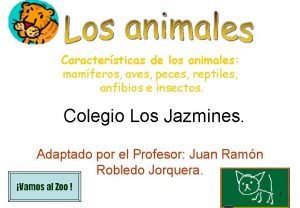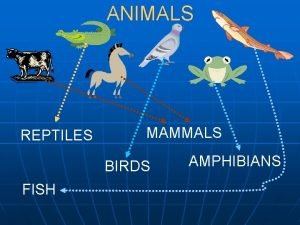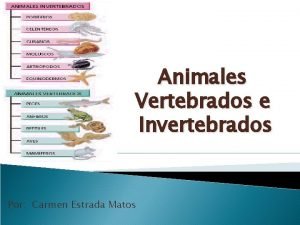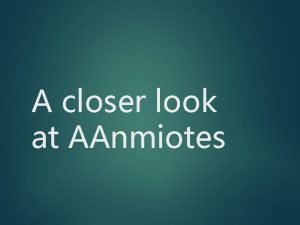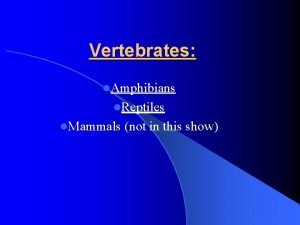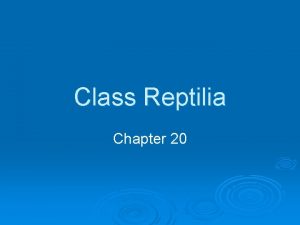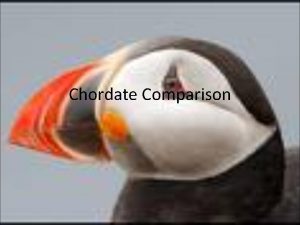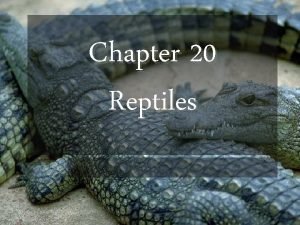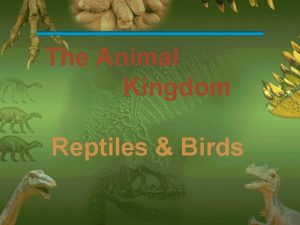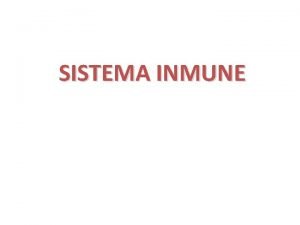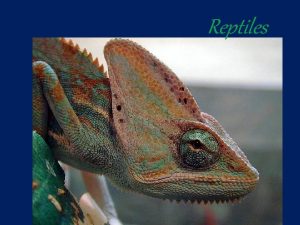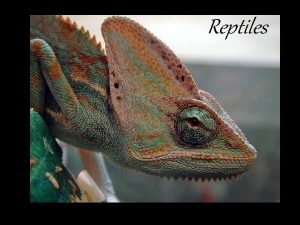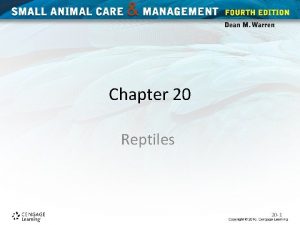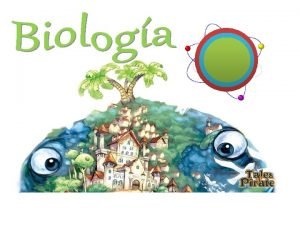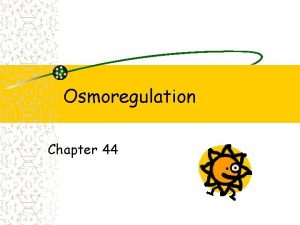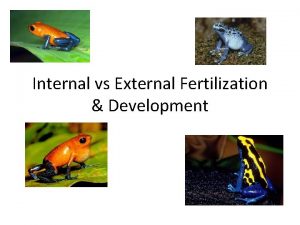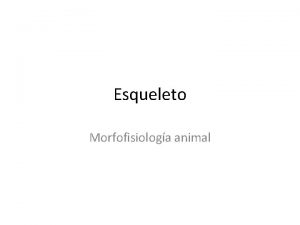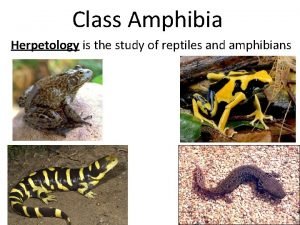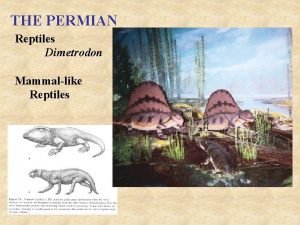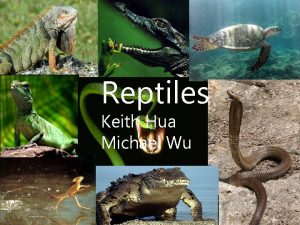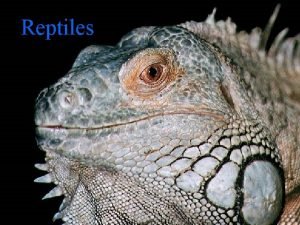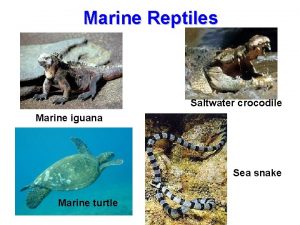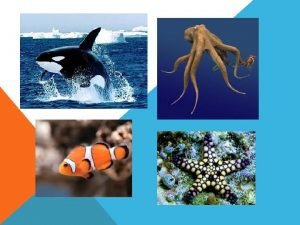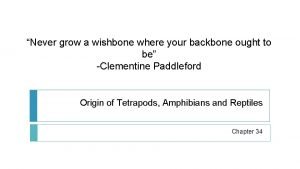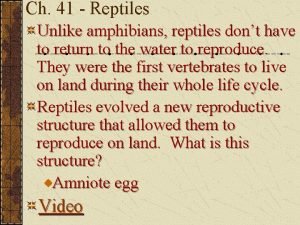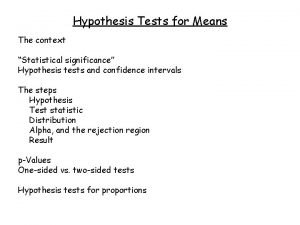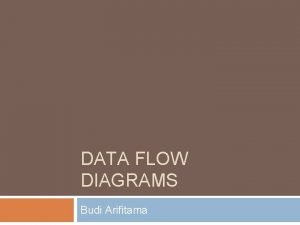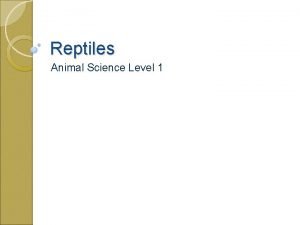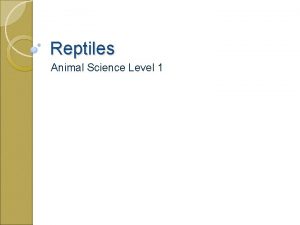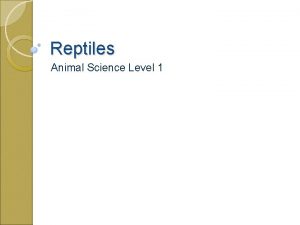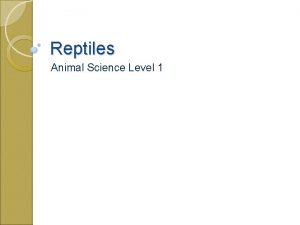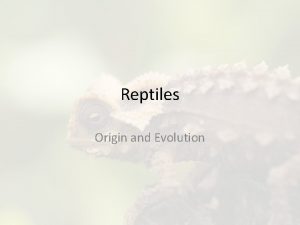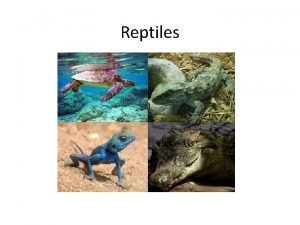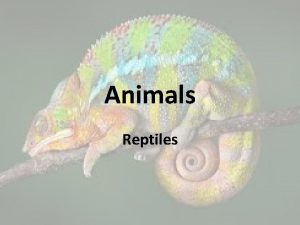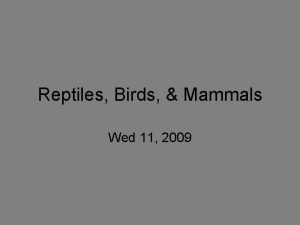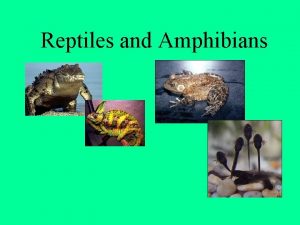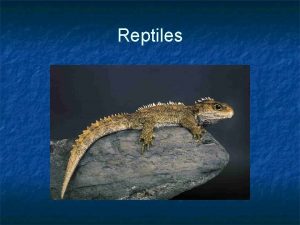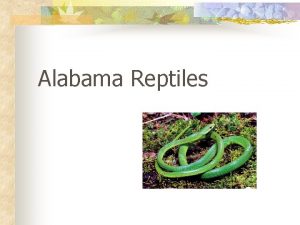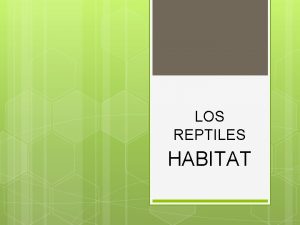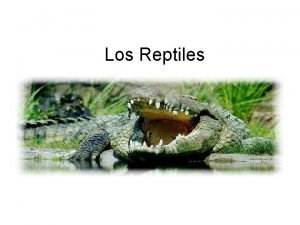Reptiles Animal Science Level 1 Intro to Reptiles




































































- Slides: 68

Reptiles Animal Science Level 1

Intro to Reptiles Video: Video Quiz to Follow (Part One Only)

Unit Essential Question: ◦ Why are reptiles growing in popularity? Daily Unit Map: Reptiles essential questions: ◦ What characteristics of reptiles would influence pet owner’s? ◦ What characteristic of reptiles influences their required environment? ◦ How does environment influence anatomy in reptiles and amphibians? ◦ What is the most effective method of prevention for reptile diseases? Concepts: filled out after test Vocabulary: fill out after test

Reptiles: Common Types Animal Science Level 1

Objectives Learn and Identify the common types of reptiles Understand behavioral characteristics of reptiles Identify and list habitat requirements

Warm Up Is this a reptile?

Essential Question What characteristics of reptiles would influence pet owner’s?

What is what? ? Reptile: any cold-blooded vertebrate of the class Reptilia including tortoises, turtles, snakes, lizards, alligators, crocodiles Amphibian: cold-blooded vertebrate typically living on land but breeding in water; aquatic larvae undergo metamorphosis into adult form

Frogs Types: Pacman, Green tree frog, Tomato frog, Dart frog (poisonous) For ages: 10 & up, with adult supervision Pet size: 2"- 4" long Habitat: tropical Behavior ◦ Insectivores ◦ Nocturnal ◦ Communal ◦ Good Climbers

Turtles: Semi- Aquatic Types: Red Eared Slider, Painted, Softshelled For ages: 12 & up, with adult supervision Pet lifespan: approximately 30 years Pet size: up to 12“ Behavior ◦ Omnivores ◦ Diurnal

Tortoises‘: Dry Land Types: Russian, Red footed, Greek For ages: 12 & up, with adult supervision Pet lifespan: approximately 50 year Pet size: up to 8“ Habitat: Temperate Behavior ◦ Herbivores ◦ Diurnal ◦ Burrow

Types: Snakes Corn, Ribbon, King For ages 12 and up with adult supervision Pet Lifespan: 5 years Pet Size: Dependent on type (3 ft) Behavior: ◦ Carnivores ◦ Nocturnal or Crepuscular ◦ Solitary ◦ Terrestrial-ground dwellers

Lizards: Desert Types: Bearded Dragon, Leopard Gecko, Mali Uromastyx For ages: 10 & up, with adult supervision Pet size: up to 10" long or larger Behavior ◦ Insectivores ◦ Nocturnal ◦ Solitary

Lizards: Tropical Types: Chinese Water Dragon, Iguana, Chameleon For ages: 14 & up, with adult supervision Pet lifespan: approximately 15 years Pet size: up to 36" long Behavior: ◦ Omnivores ◦ Diurnal ◦ Solitary

Vocabulary: Closing Insectivore: Eat Insects Omnivore: Eat Fruit, Veggies, Meat and Bugs Herbivore: Only vegetables Nocturnal: Awake at night Diurnal: Awake during the day Communal: Like living together Tropical: Jungle like environment Temperate: Medium level heat, humidity and cool temperatures. Normally dry land Desert: Low to 0 humidity, high heat

Animals Around Us: Reptiles

Video Questions Complete after viewing ◦ What are the 3 characteristics that all reptiles share? ◦ What characteristic of reptile’s skin makes them “water proof”? ◦ What do all turtles have in common? ◦ How do snakes “smell” their environment? ◦ What characteristics of reptile eggs is important to their survival? ◦ What can some reptiles do with their tails in order to avoid being eaten?

Activities Graphic Organizer ◦ Reptile Characteristics Grab something to color with! ◦ Reptile questionnaire Have an extra sheet of paper ready.

Reptiles: Items for Care Animal Science Level 1

Objectives Learn proper reptile care Identify items needed to provide proper reptile environments

Warm-Up What does this animal need to survive?

Essential Questions What characteristic of reptiles influences their required environment?

Care: Areas of Focus Environment Food Water Illness Prevention Handling

Environment : Tropical Glass Tank (based on size of animal) ◦ Water proof because of high humidity Screen Lid for ventilation Substrate: ◦ Stones on bottom for drainage ◦ On top: moss, reptile bark, coconut husks or soil mixture MUST HOLD MOISTURE Basking sight (rock) Plants (live or fake) UVB or Florescent Lighting


Environment: Desert Glass Tank Screen lid for ventilation Substrate: ◦ Sand (be careful with feeding!) ◦ Newspaper Want to not hold moisture Basking sight UVB or Florescent lighting


Bearded Dragon Enclosure Set Up http: //www. articlesbase. com/videos/5 min/145449932

Environment: Turtles Glass Tank Screen lid for ventilation Water ◦ Treated for chlorine ◦ Heated (low heating requirements) ◦ FILTER Clean regularly Basking sight Plants (Live or Fake) UVB or Florescent lighting


Food Insectivores ◦ Crickets (live or dead) ◦ Worms (mealworms, wax worms, butter worms, ◦ Coat in Calcium dust (available at pet stores) Herbivores ◦ Dark leafy greens (WASHED) ◦ Fruit (without skins) ◦ Some calcium dust provided Carnivores ◦ Mice (live or frozen)

Water ALWAYS AVAILABLE! Bowls ◦ Easy to clean ◦ Keep free of mold Large water bowl ◦ Many reptiles shed ◦ They require full immersion in water for periods of time ◦ Water bowl must be able to fit the animal

Illness Prevention Keep water bowls clean Appropriate levels of humidity, and temperature to prevent to much mold growth Wash hands before and after handling ◦ Salmonella Proper Diet

Vocabulary: Substrate: bedding for reptiles, based on environmental needs of pet Furnishing: tank accessories, rocks, branches, live or fake Basking : sitting to gather sun: regulated temperature, required for Vitamin D UVB Lighting: artificial lighting to mimic the sun. Some provide both UV and UVB rays as well as heat

Life Science: Reptiles

Video Questions Complete after viewing

Activities Design a Habitat ◦ Care sheets from teacher ◦ Items to color with Amphibians Book Work page 361 ◦ Define all vocab ◦ Use once in a sentence ◦ Answer the questions at end of chapter in complete sentences ◦ (Share Books)

Reptiles: Gross Anatomy Animal Science Level 1

Objectives Identify gross anatomy, and internal anatomy of common reptiles and amphibians

Warm Up How are these animals suited for their environment?

Essential Question How does environment influence anatomy in reptiles and amphibians?

Frog: Gross Anatom y

Frog Internal Anatomy

Turtle External Anatomy

Turtle: Internal

Snake: Internal and Skeletal Anatomy

Snake: Movement Represent these in your notes

Cool Creatures: Reptiles

Video Questions What characteristics do all reptiles share? Who is the largest reptile? Where do they live? What is special about a snakes head that helps them find food? How can geckos climb trees? Why are Tree geckos “threatened”? Explain how sea turtles are “born” What reptile can live to be 100 years old? How many venomous lizards are there? Where do marine iguanas live? A turtle that lives on land is called

Activities Reptiles Book Work page 379 ◦ Define all vocab ◦ Use once in a sentence ◦ Answer the questions at end of chapter in complete sentences ◦ (Share Books)

Reptiles: Common Diseases Animal Science Level 1

Objectives Identify common characteristics of reptile and amphibian diseases Evaluate methods of treatment and prevention for reptile and amphibian diseases

Warm Up What is wrong with this reptile?

Essential Question What is the most effective method of prevention for reptile diseases?

Activity Read your handouts on different Reptile and amphibian common diseases Design a graphic organizer with your information ◦ What is it? Cause? Sign and Symptoms? Treatment? Prevention? You will present your information and graphic organizer to your classmates.

Presentations Graphic Organizers for notes

Common Reptile Diseases Gout Bladder Stones Mites Impaction

What is it? Gout ◦ Change in metabolism (usage and expulsion) of uric acid. Caused by too much of inappropriate proteins in reptile diets Signs ◦ Painful enlarged joints and kidneys due to build up of uric acid Treatment ◦ Dietary modification and maintenance Prevention ◦ Feed a balanced diet for your reptile.

Articular gout in lizard tail. Unable to move without pain

What is it? Bladder Stones ◦ Excess urates in bladder system crystallize forming stones Causes: ◦ Improper Diet and dehydration Signs: ◦ Rear leg paralysis or weakness, constipation, runny noses, egg-binding and lack of appetite Treatment: ◦ Removal of stone, adjustment in diet Prevention: ◦ Proper diet, plenty of water available

Bladder Stones in Tortoise

What is it? Mites ◦ Parasites: can lead to blood diseases Causes: ◦ Unclean living conditions, transmission from other reptiles Signs: ◦ Dysecdysis (difficulty shedding), extra time in water bowl Treatment: ◦ Clean entire cage to rid of mites, Prevention: ◦ Quarantine new animals, clean cages thoroughly, soak ornaments

Mite on Snake

What is it? ◦ Block in digestion tract Impaction Causes: ◦ Housing in loose substrate, inappropriate sized food, dehydration Signs: ◦ Constipation, bruising on abdomen, lethargy Treatment: ◦ Quarantine animal on paper towel, Take to vet if appetite doesn’t improve Prevention: ◦ Non-loose substrate, appropriate diet

Impaction in Lizard

Activities Complete you graphic organizers from your classmate’s presentations Design a brochure on reptile health ◦ You have just covered many common reptile diseases. Make a brochure on how to keep a reptile healthy and free of these diseases based on what you have learned for prevention of these diseases. ◦ MUST BE COLORED

Video: Amphibians and Fish. Video quiz follows both segments

Test Review Define: Substrate, Basking, UVB, Furnishing, Insectivore, Herbivore, Carnivore, Desert, Temperate, Tropical, Omnivore, Nocturnal, Diurnal, Crespucular, Communal, Solitary What are the ways a snake moves? Internal Anatomy of a Turtle Know the information for the 4 reptile diseases presented in class. How are birds and reptiles related?
 Animal kingdom intro
Animal kingdom intro My favorite school subject
My favorite school subject Chapter 1 intro to forensic science
Chapter 1 intro to forensic science Venn diagram of organelles in plant and animal cells
Venn diagram of organelles in plant and animal cells Animal cell venn diagram
Animal cell venn diagram Animal rights vs animal welfare
Animal rights vs animal welfare Life science grade 11 animal nutrition
Life science grade 11 animal nutrition Animal science final exam
Animal science final exam Colorado animal science curriculum
Colorado animal science curriculum Animal science
Animal science Reptilenesia animal science
Reptilenesia animal science Animal science career cluster
Animal science career cluster Animal science merit badge worksheet
Animal science merit badge worksheet National animal nutrition program
National animal nutrition program Advanced animal science
Advanced animal science Advanced animal science
Advanced animal science Importance of animal science
Importance of animal science Adv animal science
Adv animal science Principles of animal nutrition
Principles of animal nutrition Campo semántico de animales invertebrados
Campo semántico de animales invertebrados Are birds reptiles or mammals
Are birds reptiles or mammals Sistema circulatorio de los peces
Sistema circulatorio de los peces Plane filling motif with reptiles
Plane filling motif with reptiles Animales vertebrados mamiferos aves peces anfibios reptiles
Animales vertebrados mamiferos aves peces anfibios reptiles 5 características de aves
5 características de aves Aparato digestivo del reptil
Aparato digestivo del reptil Dinosaurs were reptiles that lived
Dinosaurs were reptiles that lived Chapter 31 reptiles and birds worksheet answer key
Chapter 31 reptiles and birds worksheet answer key Chapter 31 reptiles and birds
Chapter 31 reptiles and birds Chapter 29 section 1 reptiles
Chapter 29 section 1 reptiles Reptiles caracteristicas
Reptiles caracteristicas Amphibians reptiles mammals birds fish
Amphibians reptiles mammals birds fish Los anfibios son vertebrados
Los anfibios son vertebrados Different types of reptiles
Different types of reptiles Reptiles organs for locomotion
Reptiles organs for locomotion Filo porifera sistema digestorio
Filo porifera sistema digestorio Reptiles organs for locomotion
Reptiles organs for locomotion Reptiles organs for locomotion
Reptiles organs for locomotion Reptiles organs for locomotion
Reptiles organs for locomotion Reptiles order
Reptiles order Sistema inmune en reptiles
Sistema inmune en reptiles Thecodonts
Thecodonts Gervais worm snake
Gervais worm snake 3 characteristics of reptiles
3 characteristics of reptiles Mediante tecnicas bioquimicas un biologo celular determino
Mediante tecnicas bioquimicas un biologo celular determino Reptiles animals
Reptiles animals Medusa vertebrado o invertebrado
Medusa vertebrado o invertebrado External fertilization birds
External fertilization birds Esclerocito
Esclerocito Amphibians and reptiles
Amphibians and reptiles Difference between reptiles and amphibians
Difference between reptiles and amphibians Transgression
Transgression Circulation in reptiles
Circulation in reptiles Lizard fertilization
Lizard fertilization Marine reptiles
Marine reptiles Reptiles carnivores
Reptiles carnivores Do reptiles show up on thermal imaging
Do reptiles show up on thermal imaging Never grow a wishbone where your backbone ought to be
Never grow a wishbone where your backbone ought to be Unlike amphibians reptiles
Unlike amphibians reptiles Molecular level vs cellular level
Molecular level vs cellular level Isis protocol
Isis protocol Dr shaffi
Dr shaffi Isis level 1 vs level 2
Isis level 1 vs level 2 What is the interpretation of a 96 confidence level
What is the interpretation of a 96 confidence level Confidence level and significance level
Confidence level and significance level Data flow diagram level 1 2 3
Data flow diagram level 1 2 3 Level security
Level security Costa question
Costa question Instruction level parallelism vs thread level parallelism
Instruction level parallelism vs thread level parallelism
